The calendar said it was still spring. Barely. But the news release from Yellowstone National Park, and the subsequent follow-up from Montana Fish, Wildlife, and Parks, delivered the ominous and expected news in this fishy corner of southwest Montana and northwest Wyoming. As of 2 p.m. on June 19, summer “hoot owl” closures would go into effect. No fishing on the Firehole and its tributaries; the Gibbon River and its tributaries below Norris Campground; and on the entire length of the Madison River through the park after 2pm each day. Montana’s fish and wildlife agency doubled down, and restricted fishing on the Madison above Hebgen Lake after 2 p.m., starting June 19. In Montana, the Sun River is also under “hoot owl” restrictions.
The reason? When water temperatures reach 68 degrees and then stay there for most of the day, the stress on the rivers’ wild trout is palpable. Add in the exertion put forth during a fight with an angler, and the outcome is likely death. Most wild and native trout in the Greater Yellowstone Ecosystem cannot tolerate water temperatures near 70 degrees for any significant length of time.
If it seems like an early announcement, it’s not. On June 19, 2024, MFWP enacted the same closure on the Madison above Hebgen Lake. On July 15, 2024, the National Park Service closed all three rivers to fishing altogether, and a host of Yellowstone waters were closed by mid-July 2024 — in some instances, the closures stayed in place all summer long. By July 11, 2024, MFWP placed hourly fishing restrictions on most of the storied rivers of the region, including the Big Hole, the Beaverhead, the Ruby, the Clark Fork, and the Bitterroot.
It has become an annual sad summer event, brought on by everything from low flows to a warming climate in the region that’s fully backed by science and statistics. Climate deniers can deny all they want — the proof, and the truth, lies in the numbers.
What can anglers do?
In 2024, Montana Outdoors, the magazine of MFWP, published a tips piece that shared the anecdotal experiences of the article’s author as he fished the region during the summer of 2023. The article includes some excellent tips, including only fishing during the morning hours after night-time low temperatures have had a chance to cool the rivers off, quickly landing and releasing any fish caught, keeping any hooked fish in the water, and wetting your hands before touching fish.
But the best piece of advice in the article? Fish somewhere else. Go higher, and find a dependably cold mountain stream of high-elevation lake. For anglers who must target trophy trout, many high-country lakes boast large fish. Better yet, consider a tailwater river, below a reservoir, like the Bighorn, the Missouri, or the Kootenai.
If you’ve booked a trip with a lodge or a guide on one of Montana’s great free-flowing rivers this summer, expect to be up early and done early. In some instances, there’s a really good chance you’ll miss some fishing days, unless you and your guide are willing to be a bit creative and find an alternative fishery that still runs cold during the heat of Montana’s increasingly warm summers. Fishing the Big Hole in July, sadly, is probably not a viable option for anglers traveling from afar to chase the river’s storied browns and rainbows. The same could be said for the mainstream of the Bitterroot, the Clark Fork, the Madison, Gallatin, Blackfoot … the list goes on. It just is what it is.
Alternatives in Yellowstone National Park
Unfortunately, for die-hard Yellowstone anglers, by mid- to late summer, it’s likely most of the park’s storied rivers, from the Yellowstone in the north to the headwaters of the Snake in the south, will be too warm for productive fishing. Yellowstone Lake, of course, will be open, as will a host of other lakes, like Grebe Lake, Cascade Lake, Shoshone Lake, and Lewis Lake (the latter to lakes host solid brown trout populations, but be prepared to go deep, at least until late September or early October when the fish move into the shallows on their annual spawning migrations). Some rivers and streams will remain open and relatively cold, like the Gibbon River above Norris Campground, and the small streams in the headwaters of the Gardner River in the park’s northwest quadrant. The fish aren’t much to sneeze at, although there are some nice west slope cutthroats and Montana grayling to be caught off the beaten path in the upper Gibbon River.
The Yellowstone cutthroat trout country in the park’s middle section isn’t ever terribly productive in the summer, because any creek or stream with a connection to Yellowstone Lake is likely to hold only small, resident trout — the big fish from the lake only use these waters in the spring for the spawning run.
What happens next?
Biologists have warned of climate-induced reductions in wild and native trout habitat for decades. In 2022, a University of Montana study noted that bull trout and west slope cutthroat trout habitat in Montana declined 18 percent and 6 percent between 1993 and 2018, and are predicted to decline another 39 percent and 16 percent by 2080. The outlook for Montana’s wild and native trout is dire, and the culprit, according the UM study, is climate change.
“Our two native trout species in Montana will decline in the future unless appropriate conservation action is taken,” said Donovan Bell, UM’s lead author of the study. “Our results suggest that tailoring conservation strategies to specific species and specific climate-change threats is important for native fish conservation.” In other words, he suggests that we, as anglers, come to grips with the fact that lower-elevation rivers that struggle with low water flows in a warming world likely won’t be trout streams in just a few decades.
Proof that some of this is already happening? Warm water-tolerant smallmouth bass are steadily increasing their range on the storied Yellowstone River. In 2022, an angler recorded the catch of a smallie near the confluence of the Yellowstone and Gardner rivers, just a short distance from the boundary of Yellowstone National Park. In time, anglers can either embrace these temperature-tolerant invaders as the replacements of the wild and native trout that they will likely be, or they can go higher and deeper (or stick to tailwaters below dams) in search of trout. Sadly, many prominent trout anglers, like Orvis’ venerable Tom Rosenbauer, understand that some storied trout rivers won’t be trout rivers forever.
“We’re going to lose some trout streams. If things keep up, we’re going to be limited to fishing below tailwaters where water comes out of a dam, and we’re going to be limited to high-mountain streams,” Rosenbauer told a group of anglers at the School of Trout event in Idaho in 2023. “The freestone, non-tailwater streams that go through the valleys? We’re going to lose some of those.”
For now, trout anglers in Montana and throughout the West — this is hardly just a Montana problem — must come to terms with hoot-owl restrictions and river closures to protect wild and native trout, even if the long game suggests that many trout streams are likely living on borrowed time. The emphasis now must likely shift to protecting the best of the higher-elevation habitat — keeping it intact and healthy. And that’s not necessarily as easy as it sounds when wrong-headed political efforts are afoot to open the backcountry to extractive industry.
Our grandchildren can know the thrill of fishing for wild trout in the Rockies. But it likely won’t be on the trout streams we fish today, or the trout streams that inspired us to pick up a fly rod all those years ago.

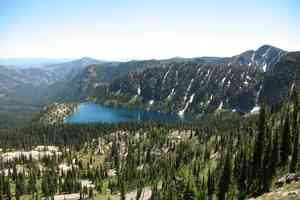
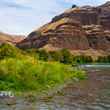

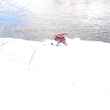
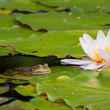


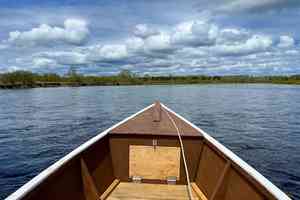
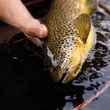
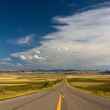
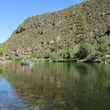
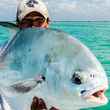
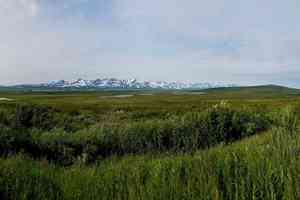
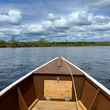
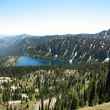
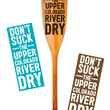
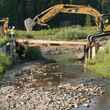

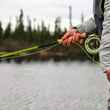

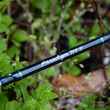

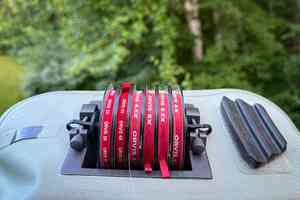
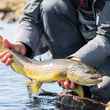
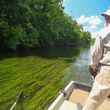
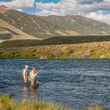
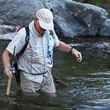

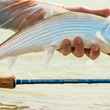

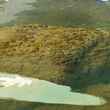
Comments
Eddie replied on Permalink
Truth. Hard to swallow, but truth, nonetheless.
Anonymous replied on Permalink
Your information incorrect. The fishing is open on the Firehole, Gibbon, Madison, and their tributary streams from dawn until 2:00 p.m. every day.
Chrs replied on Permalink
That's exactly what the article says.
Pages